Welcome to my homepage. I am an earthquake seismologist, studying on dynamic process of earthquake generation process through numericl modeling and near-fault ground motion records as well as aiming at contributing to the quantitative seismic hazard assessment for natural and induced seismicity.
- Born in Tokyo, Japan.
- Graduated from Tohoku University, Sendai, Japan, in 1995 (Seismology - Geophysics)
- Obtained PhD from the University of Tokyo, in 2000 (Geophysics, earth and Planetary Physics)
- Obtained HDR (French Research-Directorship) from the University of Paris Diderot (Paris VII), Paris, France, in 2009 (Science de la Terre et de l’Environement et des Planètes).
- Now senior research scientist (Expert Scientifique II) at BRGM (French Geological Survey).
- Also associate researcher at Ecole Normale Supérieure, Paris since 2017.
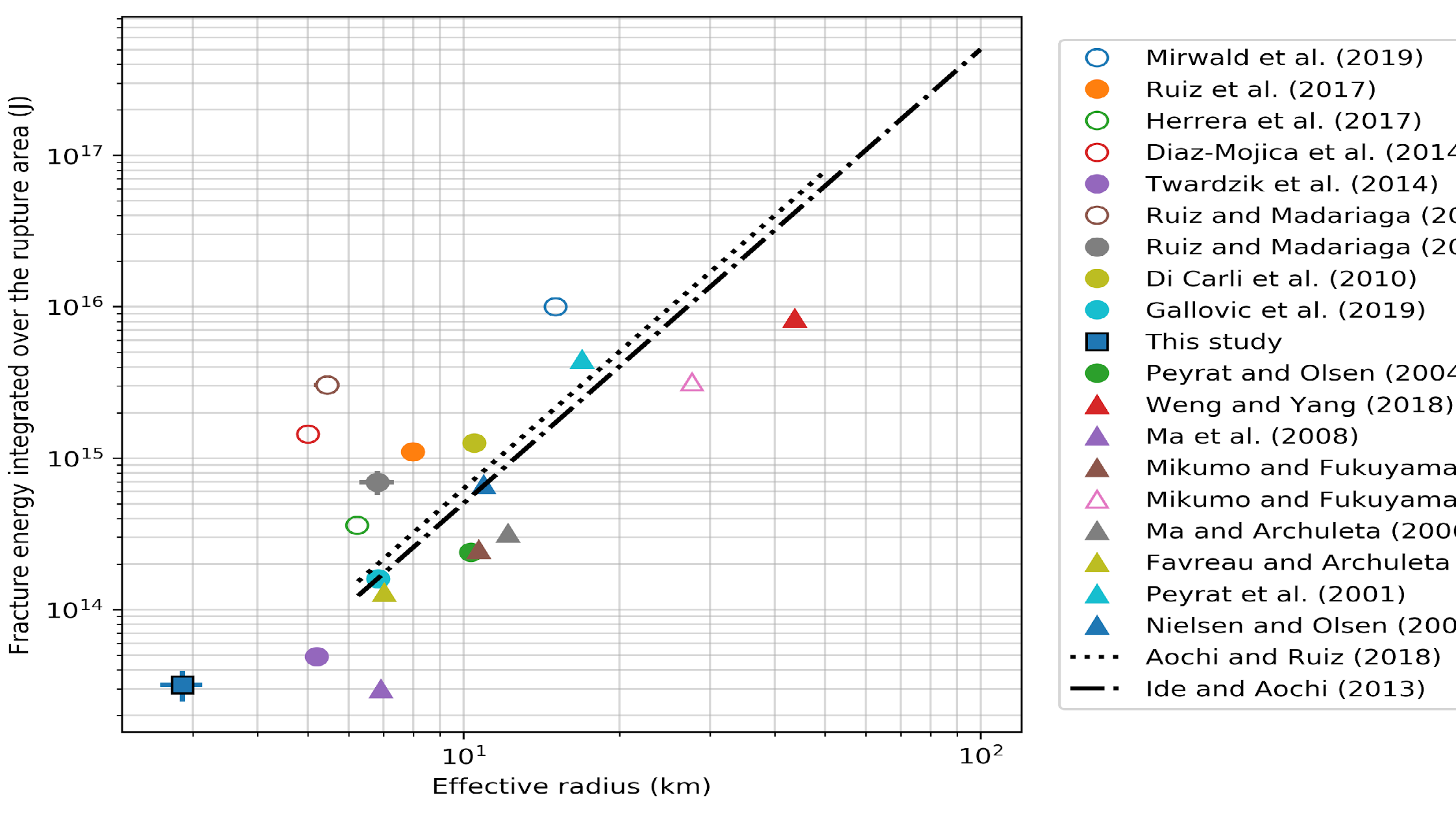
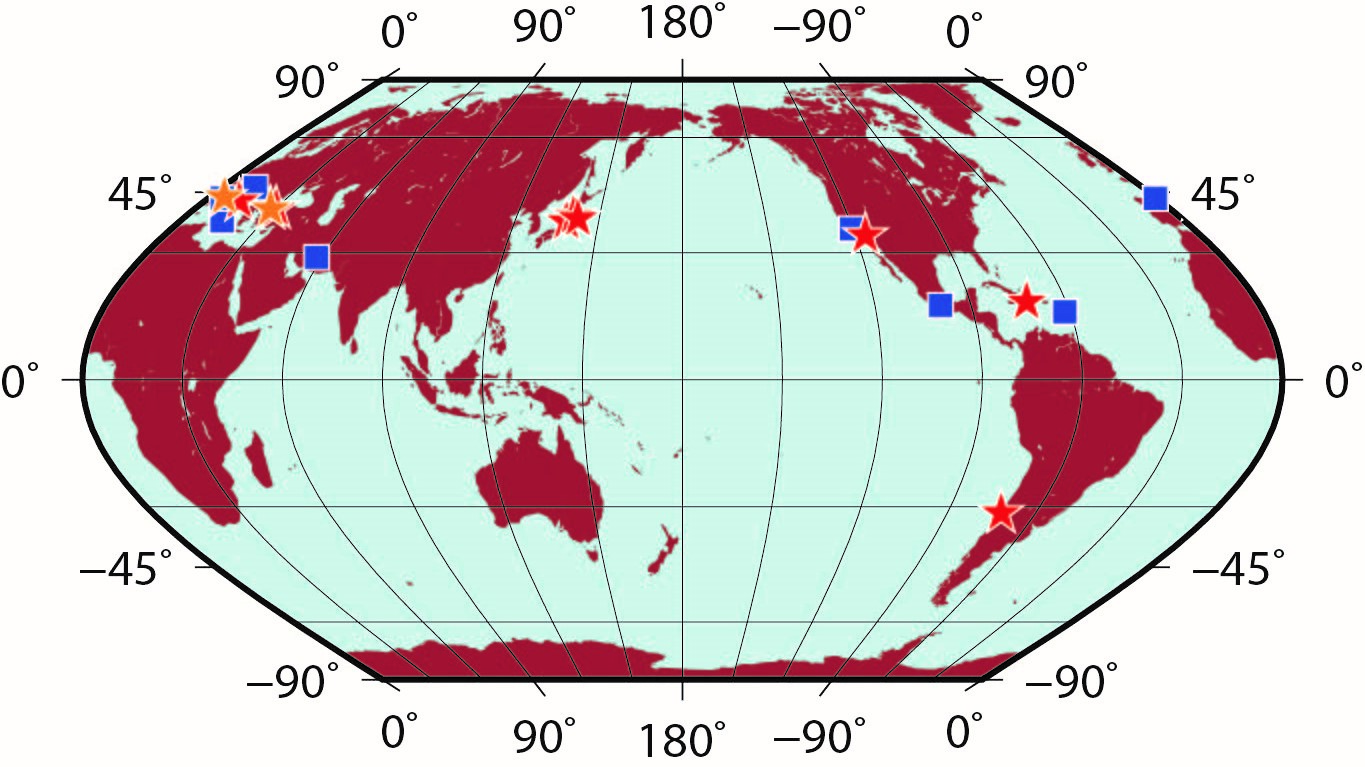
Research Fields
- Fault rheology and rupture process - Earthquake seismology - Mechanics
- Wave radiation and near-field ground motion - Seismic Hazard Study
- Numerical modeling and high-performance computation
Current Topics
- Seismological analysis of induced seismicity.
- Les phases de la Lune
- Traffic-Light-System for safety of subsurface exploitation and injection for energy purposees.
- Modeling of rupture process of recent earthquakes.
- Aseismic slip modeling and hydro-mechanical coupling.
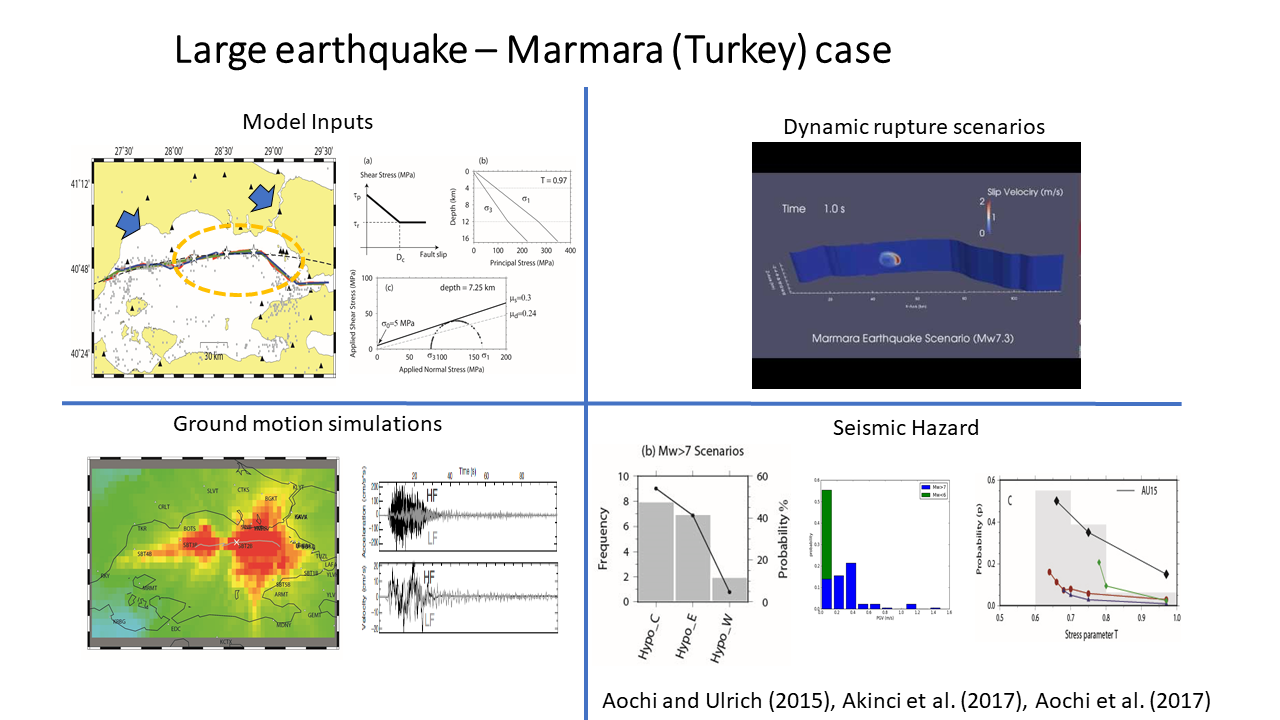
Publication
Thesis
- Aochi, H., Source Sismique: Physique et Perspective pour Aléa, HDR (French Research-Directorship) thesis, University of Paris Diderot (Paris VII), May 2009 (available from HAL!).
- Aochi, H., Theoretical studies on dynamic rupture propagation along a 3D non-planar fault system, PhD thesis, University of Tokyo, Japan, March 2000.
- Aochi, H., Slip- and time-dependent fault constitutive law and earthquake rupture process, Master thesis, University of Tokyo, Japan, March 1997 (in Japanese).
Book
Uenishi, K., N. Kame and H. Aochi, Seismology - Quantitative Approach - (Translation of “Quantitative Seismology Second Edition” by K. Aki and P. G. Richards), pp.909, Kokin Shoin, Tokyo, Japan, 2004 (in Japanese). Introduction to Japanese version by Professor Aki. Photo.
Extra
Numerical, Experimental and Theoretical Modeling of Volcanic Processes and Volcanic Hazards, edited by P. Papale et al., Pacini Editore, Pisa, Italy, pp. 359 , 2018. ISBN: 978-88-6995-428-3.
Papers in Peer-Reviwed Journals
- Aochi, H. and K. Tsuda, On the depth-dependent stress accumulation controlling earthquake rupture extension, submitted to Geophys. Res. Lett., 2021.
- Renou, J., M. Vallee, and H. Aochi, Deciphering the origins of transient seismic moment accelerations by realistic dynamic rupture simulations, in revision, Bull. Seism. Soc. Am., 2021.
- Maury, J. and H. Aochi, Evolution of the seismicity rate as a function of injection parameters during the 2000 and 2003 stimulations at the Soultz-sous-Forets deep geothermal site, submitted to Geophys. J. Int., 2021.
- Dominique, P., H. Aochi, and J. Morel, Induced seismicity in a former flooded coal mining basin (Gardanne area), accepted in Mine Water and the Environment, 2021.
- Aochi, H. and S. Ruiz, Early stage and main ruptures of the 2015 Mw8.3 Illapel, Chile, megathrust earthquake : Kinematic elliptical inversions and dynamic rupture simulations, accepted in J. Geophys. Res., 126, e2020JB021207, 2021. https://doi.org/10.1029/2020JB021207
- Aochi, H., J. Maury and T. Le Guenan, How do statistical parameters of induced seismicity correlate with fluid injection? Case of Oklahoma, Seismol. Res. Lett., published on line, 2021. https://doi.org/10.1785/0220200386
- Meza-Fajardo, K. C., H. Aochi, A. S. Papageorgiou, Comparative waveform analysis of Rayleigh and Love waves detected propagating in the Nobi and Kanto Basins during the 2004-, 2007-Chuetsu and 2011 Tohoku earthquakes, Soil Dyn. Earthq. Eng. , 143, 106606, 2021. https://doi.org/10.1016/j.soildyn.2021.106606
- Poupardin, A., E. Calais, Ph. Heinrich, H. Hébert, M. Rodriguez, S. Leroy, H. Aochi, and R. Douilly, Deep Submarine Landslide Contribution to the 2010 Haiti Earthquake Tsunami, in revision, Natural Hazards and Earth System Sciences, 2020. https://doi.org/10.5194/nhess-2019-388
- Aochi, H. and C. Twardzik, Imaging of seismogenic asperities of the 2016 ML6.0 Amatrice, Central Italy, earthquake through dynamic rupture simulations, Pageoph, 170, 1931-1946, doi:10.1007/s00024-019-02199-z, 2020.
- Burnol, A., H. Aochi, D. Raucoules, F. M. L. Veloso, F; Koudogbo, P. Chiquet, and C. Maisons, Wavelet-based analysis of ground deformation coupling data from satellites (Sentinel-1, SMOS) and from shallow and deep wells in Southwestern France, Sci. Reports, 9:8812, 10.1038/s41598-019-45302-z 2019.
- Aochi, H., Dynamic asymmetry of normal and reverse faults due to constrained depth-dependent stress accumulation, Geophys. J. Int., 215, 2134-3243, doi:10.1093/ggy407, 2018.
- Aochi, H. and A. Burnol, Mechanism of the ML4.0 25th April 2016 earthquake in southwest of France in the vicinity of the Lacq gas field, J. Seismol., 22, 1139-1155,
- doi: 10.1007/s10950-018-9758-5, 2018.
- Bacques, G., M. de Michele, D. Raucoules, and H. Aochi, The Locking Depth of the Cholame Section of the San Andreas Fault from ERS2-Envisat InSAR, Remote Sensing, 10, 1244, doi: 10.3390/rs10081244, 2018b.
- Bacques, G., M. de Michele, D. Raucoules, H. Aochi and F. Rolandone, Shallow deformation of the San Andreas fault 5 years following the 2004 Parkfield earthquake (Mw6) combining ERS2 and Envisat InSAR, Sci. Reports, 8:6032, doi:10.1038/s41598-018-24447-3, 2018a.
- De Michele, M., S. Ergintav, H. Aochi, and D. Raucoules, An L-band interferometric synthetic aperture radar study on the Ganos section of the North Anatolian fault zone between 2007 and 2011: Evidence for along strike segmentation and creep in a shallow fault patch, PLoS ONE, 12(9), e0185422, doi:10.1371/journal.pone.0185422, 2017.
- Aochi, H. and S. Ide, Role of multi-scale heterogeneity in fault slip from quasi-static numerical simulations, Earth Planet Space, 69, 94, doi:10.1186/s40623-017-0676-5, 2017.
- Aochi, H., T. Le Guenan, and A. Burnol, Developing subsurface energy exploitation strategies by considering seismic risk, Petrol. Geosci., 23, 298-305, doi:10.1144/petgeo2016-065, 2017.
- Smai, F. and H. Aochi, Study of Algorithms for Fast Computation of Crack Expansion Problem, Procedia Computer Science, 108, 745-754, doi: 10.1016/j.procs.2017.05.273, 2017.
- Akinci, A., H. Aochi, A. Herrero, M. Pischiutta, and D. Karanikas, Phyics-based broadband ground motion simulations for probable M>7.0 earthquakes in the Marmara Sea region, Bull. Seism. Soc. Am., 107, 1307-1323, doi:10.1785/0120160096, 2017.
- Aochi, H., T. Ulrich and J. Douglas, Stress accumulation in the Marmara Sea estimated through ground-motion simulations from dynamic rupture scenarios, J. Geophys. Res., 122, 2219-2235, doi: 10.1002/2016JB013790, 2017.
- Trovato, C., I. Lokmer, F. De Martin and H. Aochi, Long Period (LP) Events on Mt. Etna volcano (Italy): the influence of Velocity Structures on Moment Tensor Inversion, Geophys. J. Int., 207(2), 785-810, doi:10.1093/gji/ggw285, 2016.
- Aochi, H. and M. Yoshimi, Seismological asperities from the point of view of dynamic rupture modeling: the 2007 Mw6.6 Chuetsu-Oki, Japan, earthquake, J. Seismology, 20, 1089-1105, doi:10.1007/s10950-016-9569-5, 2016.
- Douglas, J. and H. Aochi, Assessing components of ground-motion variability from simulations for the Marmara Sea region (Turkey), Bull. Seism. Soc. Am., 106, 300-306, doi:10.1785/0120150177, 2016.
- Diao, F., R. Wang, H. Aochi, T. R. Walter, Y. Zhang, Y. Zheng, and X. Xiong, Rapid kinematic finite-fault inversion for an Mw7+ scenario earthquake in the Marmara Sea: Uncertainty study, Geophys. J. Int., 204, 813-824, doi:10.1093/gji/ggv459, 2016.
- Ulrich, T. and H. Aochi, Rapidness and robustness of finite source inversion from elliptical patches method using continuous GPS and acceleration data: 2011 Mw9.0 Tohoku earthquake, Pageoph, 172, 3439-3453, doi:10.1007/s00024-014-0857-0, 2015.
- Rohmer, J. and H. Aochi, Impact of channel-like erosion patterns on the frequency-magnitude distribution of earthquakes, Geophys. J. Int., 202(1), 670-677, doi:10.1093/gji/ggv181, 2015.
- Aochi, H. and T. Ulrich, A probable earthquake scenario near Istanbul determined from dynamic simulations, Bull. Seism. Soc. Am. , 105(3), 1468-1475, doi:10.1785/0120140283, 2015.
- Ducellier, A. and H. Aochi, Importance of crustal structure and anelastic attenuation for estimating ground motion parameters by finite difference simulation, Bull. Earthq. Eng., 13(7), 1893-1911, doi:10.1007/s105-18-014-9700-3, 2015.
- Douilly, R., H. Aochi, E. Calais and A. M. Freed, 3D dynamic rupture simulations across interacting faults: the Mw 7.0, 2010, Haiti earthquake, J. Geophys. Res, 120, 1108-1128, doi:10.1002/2014JB011595, 2015.
- Maury, J. H. Aochi and M. Radiguet, Fault constitutive relations inferred from the 2009-2010 slow slip event in Guerrero, Mexico, Geophys. Res. Lett., 41, doi:10.1002/2014GL060691, 2014.
- Aochi, H. and S. Ide, Ground motions characterized by a multi-scale heterogeneous earthquake model, Earth Planets and Space, 66:42, doi:10.1186/1880-5981-66-42, 2014.
- Douglas, J. and H. Aochi, Using estimated risk to develop exploitation strategies for Enhanced Geothermal Systems, Pageoph, 171, 1847-1858, doi: 10.1007/s00024-013-0765-8, 2014.
- Aochi, H., B. Poisson, R. Toussaint, X. Rachez and J. Schmittbuhl, Self-induced seismicity due to fluid circulation along faults, Geophys. J. Int., 196 (3), 1544-1563, doi:10.1093/gji/ggt356, 2014.
- Aochi, H., T. Ulrich, A. Ducellier, F. Dupros, D. Michea, Finite difference simulations of seismic wave propagation for unerstanding earthquake physics and predicting ground motions: Advances and challenges, J. Phys: Conf. Ser., 454, 012010, doi: 10.1088/1742-6596/454/1/012010, 2013.
- Dupros, F., H.-T. Do and H. Aochi, On scalability issues of the elastodynamics equations on multicore platforms, Procedia Computer Science, 18, 1226-1234, doi:10.1016/j.procs.2013.05.289, 2013.
- Ide, S. and H. Aochi, Historical seismicity and dynamic rupture process of the 2011 Tohoku-Oki earthquake, Tectonophys., 600, 1-13, doi: 10.1016/j.bbr.2011.03.031., 2013.
- Aochi, H., A. Ducellier, F. Dupros, M. Delatre, T. Ulrich, F. de Martin and M. Yoshimi, Finite difference simulations of the seismic wave propagaion for the 2007 Mw6.6 Niigata-ken Chuetsu-Oki earthquake: Validity of models and reliable input ground motion in the near field, Pure appl. Geophys., 170, 43-64, doi: 10.1007/s00024-011-0429-5, 2013.
- Ducellier, A. and H. Aochi, Effects of the interaction of topographic irregularities on seismic ground motion, investigated by the hybrid FD-FE method, Bull. Earthq. Eng., 10, 773-792, doi: 10.1007/s10518-011-9335-6, 2012.
- Aochi, H. and S. Ide, Conceptual multi-scale dynamic rupture model for the 2011 Off-the-Pacific-Coast-of-Tohoku earthquake, Earth Planets Space, 63, 761-765, doi:10.5047/eps.2011.05.008, 2011.
- de Michele, M., D. Raucoules, F. Rolandone, P. Briole, J. Salichon, A. Lemoine and H. Aochi, Spatiotemporal evolution of surface creep in the Parkfield region of the San Andreas Fault (1993-2004) from synthetic aperture radar, Earth Planet. Sci. Lett., 308, 141-150, doi: 10.1016/j.epsl.2011.05.049, 2011.
- Aochi, H. and F. Dupros, MPI-OpenMP hybrid simulations using boundary integral equation and finite difference methods for earthquake dynamics and wave propagation: Application to the 2007 Niigata Chuetsu-Oki earthquake (Mw6.6), Procedia Comptuter Science, 4, 1496-1505, doi:10.1016/j.procs.2011.04.162, 2011.
- Aochi, H., V. Durand and J. Douglas, Influence of super-shear earthquake rupture models on simulated near-source ground motion from the 1999 Izmit (Turkey) earthquake, Bull. Seism. Soc. Am., 101, 726-741, doi:10.1785/0120100170, 2011.
- Aochi, H. and A. Kato, Dynamic rupture of crosscutting faults: A possible rupture process for the 2007 Mw6.6 Niigata-ken Chuetsu-Oki earthquake, J. Geophys. Res., B05310, doi:10.1029/2009JB006556, 2010.
- Imperatori, W., H. Aochi, P. Suhadolc, J. Douglas, A. Ducellier and G. Costa, 2D versus 1D ground-motion modelling for the Friuli region, north-eastern Italy, Bollettino di Geofisica Teorica ed Applicata, 51(1), 43-56, 2010.
- Salichon, J., A. Lemoine and H. Aochi, Validation of teleseismic inversion of the 2004 Mw6.3 Les Saintes, Lesser Antilles, earthquake by 3D finite-difference forward modeling, Bull. Seism. Soc. Am., 99(6), 3390-3401, doi:10.1785/0120080315, 2009.
- Aochi, H. and R. Ando, Numerical simulations on faulting: Microscopic evolution, macroscopic interaction and rupture process of earthquakes, J. Seism. Soc. Japan, 61, S403-S413, doi:10.4294/zisin.61.403, 2009.(review paper in Japanese)
- Aochi, H. and S. Ide, Complexity in earthquake sequences controlled by multi-scale heterogeneity in fault fracture energy, J. Geophys. Res., 114, B03305, doi:10.1029/2008JB006034, 2009.
- Douglas, J. and H. Aochi, A survey of techniques for predicting earthquake ground motions for engineering purposes, Survey in Geophysics, 29, 187-220, doi: 10.1007/s10712-008-9046-y, 2008.
- De Michele, M., D. Raucoules, H. Aochi, N. Baghadadi, C. Carnec, Measuring coseismic deformation on the northern segment of the Bam Naravat escarpment associated with the 2003 Bam (Iran) earthquake, by correlation of very high resolution satellite imagery., Geophys. J. Int., 173, 459-464, doi:10.1111/j.1365-246X.2008.03743.x, 2008.
- Dupros, F., H. Aochi, A. Ducellier, D. Komatitsch, and J. Roman, Exploiting intensive multithreading for efficient simulation of seismic wave propagation, 11th International Conference on Computational Science and Engineering, 253-260, San Paulo, Brazil, doi:10.1109/CSE.2008.51, July 2008.
- Cruz-Atienza, V., J. Virieux and H. Aochi, 3D Finite-Difference Dynamic-Rupture Modelling Along Non-Planar Fault, Geophysics, 72(5), SM123-SM137, doi: 10.1190/1.2766756,2007.
- Douglas, J., H. Aochi, P. Suhadolc and G. Costa, The importance of crustal structure in explaining the observed uncertainties in ground motion estimation, Bull. Earthq. Engineering, 5, 17-26, 10.1007/s10518-006-9017-y, 2007.
- Aochi, H. and J. Douglas, Testing the validity of simulated strong ground motion from the dynamic rupture of a fault system, by using empirical equations, Bull. Earthq. Engineering, 4, 211-229, 10.1007/s10518-006-0001-3, 2006.
- Aochi, H., M. Cushing, O. Scotti, and C. Berge-Thierry, Estimating rupture scenario likelihood based on dynamic rupture simulations: the example of the segmented Middle Durance fault, southeastern France, Geophys. J. Int., 165, 436-446, doi:10.1111/j.1365-246X.2006.0284.x, 2006.
- Ide, S. and H. Aochi, Earthquakes as multiscale dynamic ruptures with heterogeneous fracture surface energy, J. Geophys. Res., 110, B11303, doi:10.1029/2004JB003591, 2005.
- Aochi, H., O. Scotti, and C. Berge-Thierry, Dynamic transfer of rupture across differently oriented segments in a complex 3-D fault system, Geophys. Res. Lett., 32, L21304, doi:10.1029/2005GL024158, 2005.
- Aochi, H. and K. B. Olsen, On the effects of non-planar geometry for blind thrust faults on strong ground motion, Pure appl. Geophys., 161, 2139-2153, 10.1007/s00024-004-2554-x, 2004.
- Aochi, H. and S. Ide, Numerical Study on Multi-Scaling Earthquake Rupture, Geophys. Res. Lett., 31(2), doi:10.1029/2003GL018708, 2004.
- Aochi, H. and R. Madariaga, The 1999 Izmit, Turkey, earthquake: Non-planar fault structure, dynamic rupture process and strong ground motion, Bull. Seism. Soc. Am., 93, 1249-1266, doi:10.1785/0120020167, 2003.
- Aochi, H. and E. Fukuyama and R. Madariaga, Constraints of Fault Constitutive Parameters Inferred from Non-planar Fault Modeling, Geichemistry, Geophysics, Geosystems, 4(2), doi:10.1029/2001GC000207, 2003.
- Aochi, H. and M. Matsu’ura, Slip- and time-dependent fault constitutive law and its significance in earthquake generation cycles, Pure appl. Geophys., 159, 2029-2044, 10.1007/s00024-002-8721-z, 2002.
- Aochi, H., R. Madariaga and E. Fukuyama, Effect of Normal Stress During Rupture Propagation along Non-planar Fault, J. Geophys. Res., 107(B2), doi:10.1029/2001JB000500, 2002.
- Aochi, H. and E. Fukuyama, Three-dimensional nonplanar simulation of the 1992 Landers earthquake, J. Geophys. Res., 107(B2), doi:10.1029/2000JB000061, 2002.
- Aochi, H., E. Fukuyama and M. Matsu’ura, Selectivity of spontaneous rupture propagation on a branched fault, Geophys. Res. Lett., 27, 3635-3638, doi:10.1029/2000GL011560, 2000b.
- Aochi, H., E. Fukuyama and M. Matsu’ura, Spontaneous Rupture Propagation on a Non-planar Fault in 3D Elastic Medium, Pure appl. Geophys., 157, 2003-2027, doi:10.1007/PL00001072, 2000a.
Selected Articles in Proceedings and Technical Repports
- Aochi, H., F. Smai and J. Rutqvist, Repeating earthquake behavior due to fluid circulation through TOUGH-BIEM simulation, TOUGH symposium, Berkeley, CA, USA, October 2018.
- Aochi, H. and H. Miyake, On near-field ground motions of normal and reverse faults from viewpoint of dynamic rupture model, In the proceedings for the 2nd IAEA workshop on Best Practice in Physics-based Fault Rupture Models for Seismic Hazard Assessment of Nuclear Installations, Cadarache-Château, France, 14-16 May 2018 (invited).
- Aochi, H. and J. Douglas, A concept of a Traffic-Light-System developed for induced seismicity, BRGM technical report, RP-66981-FR, 2017.
- Aochi, H., Input groud motion calculation based on dynamic rupture modeling on segmented faults, In the proceedings for the IAEA workshop on Best Practices in Physics-based Fault Rupture Models for Seismic Hazard Assessment of Nuclear Installations, Vienna, Austria, 18-20 November 2015 (invited).
- Cirella, A., A. Piatanesi, F. Diao, R. Wang and H. Aochi, Performance assessment of finite-fault inversion codes in the Marmara configuration, technical report to FP7 MARsite project, doi:10.13140/RG2.2.15382.96327, April 2015.
- Ide, S. and H. Aochi, Modeling earthquakes using fractal circular patch models with lessons from the 2011 Tohoku-Oki earthquake, J. Disaster Research, 9(3), 264-271, 2014.
- Aochi, H., A. Ducellier, F. Dupros, M. Terrier and J. Lambert, Investigation of historical earthquake by seismic wave propagation simulation: Source parameters of the 1887 M6.3 Ligurian, north-western Italy, earthquake, in the 8me colloque AFPS, Champs-sur-Marne, France, September 2011. copy here
- Delatre, M. and H. Aochi, Génération d’accélérogrammes synthètiques large bande par méthode hybride : application au seisme de Niigata, in the 8me Colloque AFPS, Champs-sur-Marne, France, Septembre 2011. copy here
- Ducellier, A. and H. Aochi, Numerical simulation of the Mw 6.6 2007 Niigata Japan earthquake : study of the dynamic source mechanism., in 14 the European Conference of Earthquake Engineering, Ohrid, Macedenia, August 2010.
- Ducellier, A. and H. Aochi, A coupled 2D finite-elements - finite-difference method for seismic wave propagation : case of a semi-circular canyon., the 9th International Conference on Mathematical and Numerical Aspects of Waves Propagation (Waves’09), Pau, France, 2009.
- De Martin, F., H. Modaressi, and H. Aochi, Coupling of FDM and FEM in seismic wave propagation, 4th international conference on Earthquake Geotechnical Engineering, Paper No. 1743, Thessaloniki, Greece, June 2007. paper available.
- Bernardie, S., H. Aochi, H. Modaressi and R. Madariaga, Some insights on dynamic rupture modelling using a finite element method, First European Conference on Earthquake Engineering and Seismology, No. 856, Geneva, Switzerland, September 2006. paper available.
- Aochi, H., J. Rey and J. Douglas, Numerical simulation of wave propagation in the Grenoble basin: Benchmark ESG2006, 3rd Int. Symposium on the Effects of Surface Geology on Seismic Motion, Grenoble, France, August 2006. paper available.
Bio
CV : My Curriculum Vitae
AOCHI, Hideo
Birth: August 7, 1972 at Tokyo, Japan
Nationality: Japanese
Current Working Address
(Permanent Address)
Bureau de Recherches Géologiques et Minières Vulcania (French Geological Survey)
Direction Risque et Prévention
3 avenue Claude Guillemin, BP36009, 45060 Orleans Cedex, France
(Occasional Address: Once a week)
Ecole Normale Supérieure
Laboratoire de Géologie
24 rue Lhomond, 75231 Paris Cedex 05, France.
Education
- HDR en Science (French Research-Directorship), “Source Sismique - Physique et Perspective pour Aléa”, University of Paris Diderot (Paris VII), May 2009.
- PhD in Science, Department of Earth and Planetary Physics, The University of Tokyo, Japan, “Theoretical studies on dynamic rupture propagation along a 3D non-planar fault system” under the direction of Professor Mitsuhiro Matsu’ura and Dr. Eiichi Fukuyama, Avril 1997 - March 2000.
- Master in Science, Department of Earth and Planetary Physics, The University of Tokyo, Japan, “Slip- and time-dependent fault constitutive law and earthquake rupture process” under the direction of Professor Mitsuhiro Matsu’ura, Avril 1995 - March 1997.
- Bachelor in Science, Department of Astronomy and Geophysics, Tohoku University, Japan, “Multi-fractal analysis on spatial pattern of seismicity” under the direction of Professors Masakazu Ohtake and Haruo Sato, Avril 1991 - March 1995.
Positions Held
- Associate Researcher: Labratoire de Géologie, Ecole Normale Supérieure Paris, since January 2017.
- Invited Professor: Research Center for Urban Security and Safety, Kobe University, Japan, July - September 2016.
- Associate Researcher: Institut des Sciences de la Terre d’Orléans, University of Orléans, France, 2012 - 2015.
- Invited Professor: Disaster Prevention Research Institute, Kyoto University, Japan, January - April 2012.
- Joined as researcher in BRGM, France, September 2004.
- Project manager, 2005.
- Senior researcher, 2008.
- Senior research scientist (Expert Scientifique II), 2016.
- Postdoctral Researcher: Bureau d’Evaluation du Risques Sismiques des Installations Nucleaires, Institute de Radioprotection et de Surete Nucleaire, France, Feburary 2003 - September 2004.
- Invited postdoctral researcher: Institute for Crustal Studies, UC Santa Barbara, USA, August - September 2002.
- Postdoctral Researcher: Laboratoire de Geologie, Ecole Normale Superieure Paris, France, April 2000 - January 2003.
Prize, Fellow
- The Young Scientists’ Prize, Minister of Education, Culture, Sports, Science and Technology (MEXT), Japan, April 2012.
- Prize of young seismologist, Seismological Soceity of Japan, May 2007.
- Postdoctral fellowships for research abroad, Japan Society for the Promotion of Science (JSPS), Avril 2000 - March 2002.
Project Coordinations
- “Study on earthquake generation and seismic wave propagation” (grant 046700) for the use of national super computing center GENCI/CINES, 2012 - present.
- Coordinator of project “Development of Broadband Acceleration Timehistories for Engineers (DEBATE)” (BRGM, ENS Paris, IRSN, prive company), Agence Nationale de Recherche (program Risques Naturels), France, 2009 - 2011.
- Coordinator of project “Seismic simulation of complex source-site context (SEISMULATORS)” (BRGM, IPGP, ENS Paris, ECP, IRSN), Agence Nationale de Recherche (program Catastrophes Telluriques et Tsunamis), France, 2006 - 2008.
- Project Leader of Seismic Risk Research Group at BRGM, 2005 - 2012.
- Fellowship project “Theoretical study on rupture processes of interactinc complex fault systems”, Japan Society for the Promotion of Science, Japan, 2000 - 2002.
Financed Project Participations (selected)
- FP7 NEMOH “Numerical, Experimental and stochastic Modeling of vOlcanic processes and Hazard”, coordinated by Paolo Papale (INGV, Italy), 2012-2015.
- FP7 MARSite “New Directions in Seismic Hazard Assessment through Focused Earth Observation in the Marmara Supersite”, coordinated by Nurcan Meral Ozel (KOERI, Turkey), 2012-2015.
- ANR S4 “Subduction: standard and slow seismology”, coordinated by Jean Virieux (ISTerre), 2012-2015.
- FP7 GEISER “Geothermal Engineering Integrating Mitigation of Induced Seismicity in Reservoirs”, coordinated by Ernst Huenges (GFZ Potsdam), 2010-2013.
- “Liens entre complexité de la faille, essaimage de la sismicité et vitesse de rupture: l’importance de l’étude de la Faille Nord Anatolienne”, coordinated by Dr. Jean Schmittbul (EOST-IPG Strasbourg), 2009-2011.
- “Rheologie des Asperites de Faille: Role des Fluides - Integration a l’Echelle du Cycle Sismique”, coordinated by Dr. Renaud Toussaints, financed by Institute National des Sciences de l’Universe, France, 2007 - 2008.
- “Adaptation et optimisation des performances applicatives sur architectures NUMA: Etude et mise en oeuvre sur des application en sismologie (NUMASIS)”, coordinated by Dr. Jean Francois Mehaut, financed by Agence Nationale de Recherche (program Calcul Intensif), France, 2006 - 2008.
- “Special Project for Earthquake Disaster Mitigation in Urban Area (Dai-Dai-Toku)” sponsored by Ministry of Education, Culture, Sports, Science and Technology, Japan, 2002 - 2007.
- “APEC Cooperation for Earthquake Simulation (ACES)” sponsored by Australia, China, Japan and USA, 1999 - 2004.
- "3D modeling of crustal deformation and tectonic stress loading process around Japan"coordinated by Professor Mitsuhiro Matsu’ura, financed by Minstry of Education, Japan, 1995 - 1997.
Meetings/Conferences
- AGU Fall Meeting 2019, San Francisco, USA, 8-14 December 2019.
- EGU General Assembly 2019, Vienna, Austria, 7-12 April 2019.
- Co-convener of session: Numerical modeling of earthquake physics
- Journée Faille Active de Paris (J-FAP), ENS Paris, 21 Feburary 2019.
- 2018 TOUGH Symposium, Berkeley, California, USA, 8-10 Oceober 2018.
- 2nd Workshop on Best PSHANI, Cadarache, France, 14-16 May 2018.
- Carbon Capture, Utilization, and Storage Experts’ Workshop, Houston-Texas, USA, 25-29 September 2017.
- As a co-planel leader of Storage - Induced Seismicity (without no presentation).
- Report on Accelerating Breakthrough Innovation in Carbon Capture, Utilization, and Storage published by Department of Energy.
- ESG (Earthquake Hazard, risk and Strong Ground Motion) Workshop, Kobe, Japan, 5 August 2017.
- IASPEI General Assembly 2017, Kobe, Japan, 30 July - 4 August 2017.
- Co-convener of session: S13 Earthquake source mechanics
- EGU General Assembly, Vienna, Austria, 23-28 April, 2017.
- Co-convener of session: Numerical Modeling of Earthquake Physics > became “Earthquake source processes - Imaging methods, numerical modeling and scaling”.
Past meetings as invited, convener or organizer
- International Workshop on Best Practices in Physics-based fault rupture models for Seismic Hazard Assessment of Nuclear Installations, Vienna, Austria, 18-20 November 2015 (invited).
- The 3rd Sustainable Earth Sciences Conference and Exhibition (EAGE conference), Celle, Germany, 13-15 October 2015 (keynote lecture).
- 26th IUGG General Assembly 2015, Prague, Czech Republic, 22 June - 2 July 2015.
- Convener of session: Strong ground motion: Earthquake scenario
- IASPEI 2013, Gothenburg, Sweden, 22-26 July 2013.
- Co-convener of session: Strong ground motion: Earthquake scenario
- AGU Fall Meeting, San Francisco, 3-7 December 2012.
- Session S016: Numerical modelling of Mega-earthquakes: Their Scale and Complexity (Session convener, 45 abstracts)
- Conference on Computational Physics, Kobe, Japan, 14-18 October 2012 (invited).
- International Workshop on Earthquake Source, Paris - Orléans, 5-9 October 2009. (organizer)
- AGU Fall Meeting, San Francisco, 15-19 December 2008.
- Session 09: Dynamic Rupturing of Earthquake at Various Scales (session convener, 16 oral presentations & 45 posters)
- Western Pacific Geophysics Meeting, Beijing, China, 24-27 July 2006.
- Fault-Zone Properties and Behaviors In Earthquakes (session co-convener)
Seminars/Lectures
- Dynamic rupture simulations of large earthquakes, University of Chile, Santiago, Chile, 21st March 2018.
- Fast and slow slip modeling on a fault for various seismicity, IPGP, Paris, France, 23rd January 2018.
- Fast and slow slip modeling on a fault for various seismicity, Lawrence Berkeley National Laboratory, Berkeley, USA, 28th October 2017.
- Dynamic rupture scenarios for ground motion simulations - Case of Marmara, Turkey, Institute of Technology Shimizu Corporation, Tokyo, Japan, 28th July 2017. (Presentaion material is available from this link.)
- Contribution à l’Estimation Quantitative d’Aléa Sismique au travers de Simulations des Tremblements de Terre: Exemple de la Mer de Marmara en Turquie, Ecole Normale Supérieure Paris, France, 21 February 2017.
- Seismic Hazard in the Euro-Mediterranian Area - Recent Examples and Progress, Open Seminar of RCUSS, Kobe University, Kobe, Japan, 17th September 2016.
- Dynamic rupture and ground motion simulations around the Sea of Marmara, Turkey, JAMSTEC, Yokohama, Japan, 8th September 2016.
- Stress accumulation in the Marmara Sea estimated through ground-motion simulations from dynamic rupture sceanrios, Geological Survey of Japan - AIST, Tsukuba, Japan, 5th September 2016.
- Near-field Ground Motions Studied from the 1999 Izmit and 20xx Marmara earthquakes, Kyoto University, Japan, 20th July, 2016.
- Quantitative Seismic Hazard Analysis around the Sea of Marmara - Earthquake Scenarios to Ground Motion Prediction, Kobe University, Japan, 14th July, 2016.
- Dynamic rupture and ground motion simulations in the Sea of Marmara, Turkey, GFZ Potsdam, 4th June, 2015.
- Earthquake dynamics controlled by multi-scale heterogeneity: Implication of the 2011 Tohoku earthquake, US Geological Survey, Menlo Park, USA, 29 April 2015.
- Modeling earthquakes using Fractal circular patch models with lessons from the 2011 Tohoku-oki earthquake, Ecole Normale Supérieure, Paris, 3 Feburary 2015.
- Using Estimated Risk to Develop Stimulation Strategies for Enhanced Geothermal Systems, Nagoya University, 26 June 2014.
- NEMOH School in Bristol “Numerical Modelling”, 18-22 September 2013.
- Complexity in earthquake sequences controlled by multiscale heterogeneity in fault fracture energy, Geoazur, Sophia Antipolis, 14 Feburary 2013.
- Strong Motion Seismology - Development of Broadband Acceleration Time Histories, IPGS, University of Strasborug, 20 November 2012.
- Strong ground motions in the very near field - 2008 Iwate-Miyagi earthquake, DPRI, Kyoto University, 9 April 2012.
- Scaling problem and complexity in earthquake rupture process, Faculty of Science, Kyoto University, 12 March 2012.
- Dynamic Earthquake Source and Ground Motion, DPRI, Kyoto University, 3 Feburary 2012.
- On slip- and time-dependent fault constitutive law and multi-scale fault heterogeneity, University of Chiba, 30 May, 2011.
- 3D seismic wave radiation and propagation during the 2007 Niigata-ken Chuetsu-Oki earthquake, NIED, Tsukuba, 12 October 2010.
- Projet ANR CATTELL SEISMULATORS / Projet ANR Risk’nat DEBATE, journée ANR CATELL/Risk’nat, ENS Lyon, France, 29-31 March 2010.
- Dynamic rupure process and earthquake scaling law, University of Bonn, 24 October 2009.
- Defence of my HDR “Source Sismique: Physique et Perspective pour Aléa”, IPG Paris, 13 May 2009 (member of jury: P. Bernard, M. Bouchon, L. Rivera, M. Mai, R. Madariaga and F. Bonilla).
- Complexity in earthquake sequences controlled by multiscale heterogeneity in fault fracture energy, Meteorological Research Institute - JMA, Tsukuba, 31 March 2009.
- Seismic Simulation in Complex Source-Site Context (project SEISMULATORS), CNRS Paris, 12 November 2007.
- 3D Dynamic rupture simulation toward seismic hazard analysis, ETHZ, Zurich, 12 January 2007.
Research
Earthquake Science
Prefaces
You will know that my research approaches have been strongly influeced by the following textbooks (to which I could contribute somehow …) written by my tutors and colleagues. Check them out!
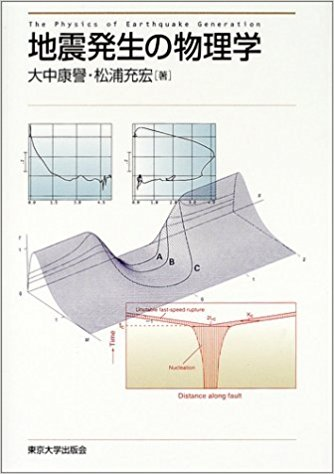
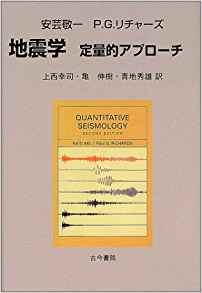
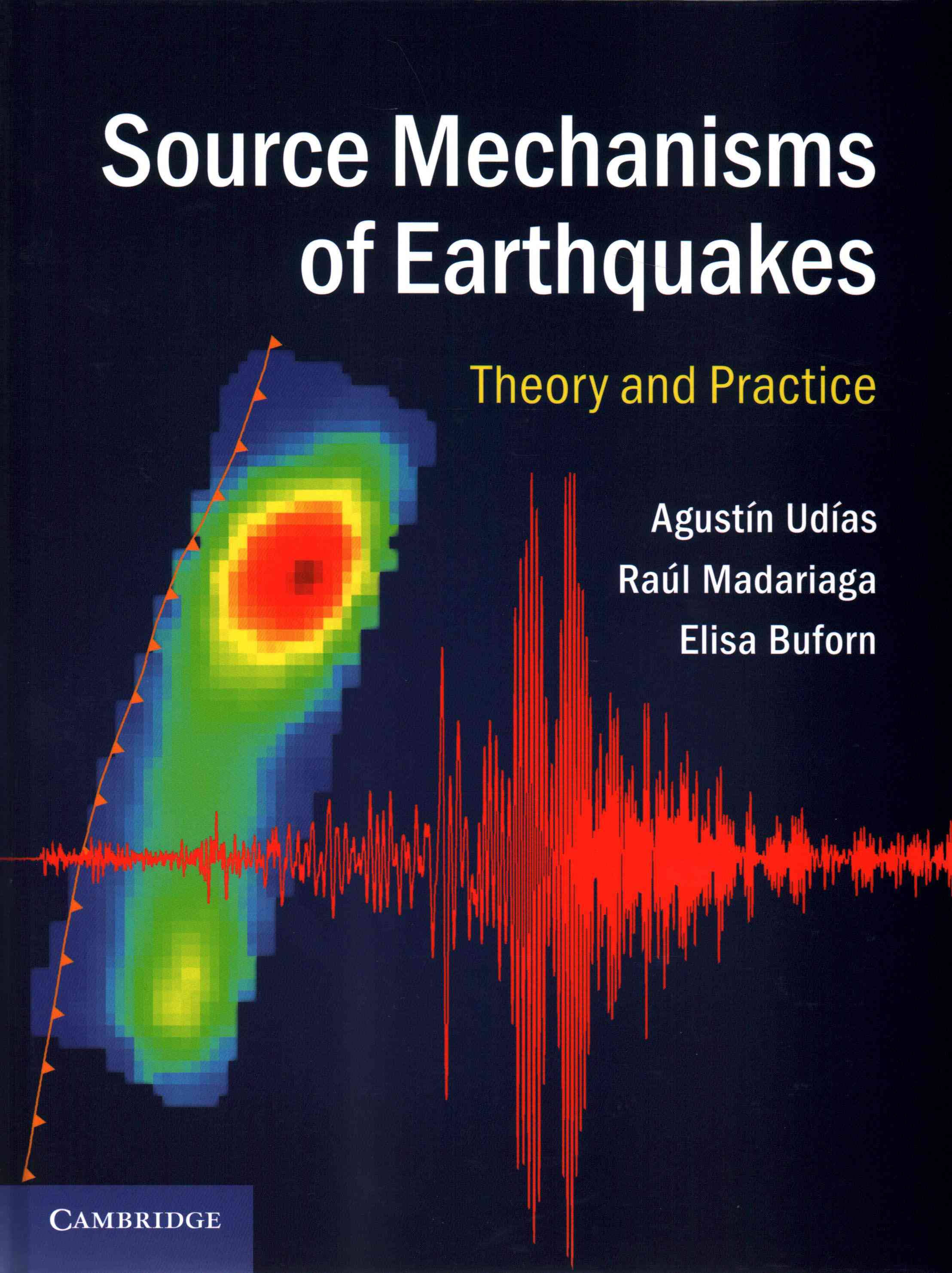
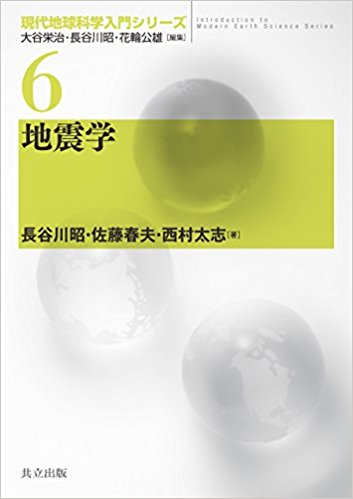
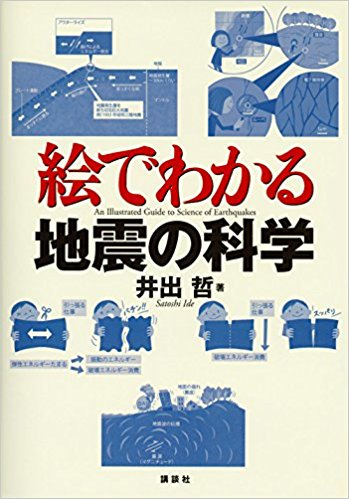
Topics/Keywords
Fault Geometry
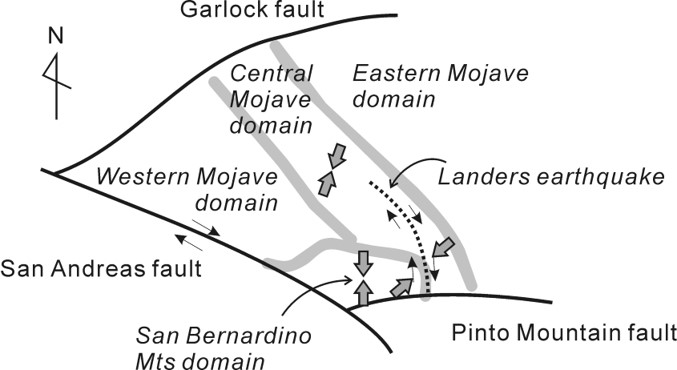
R1.1 Fault geometry controls rupture process
Earthquake fault is often aproximated as a planar plane in seismological analysis, but it is geometrically complex, including bend, branching and segmentation at various scales. From mechanical point of view, even a slight irregularity of geometry changes stress accumulation and dynamic stress perturbation. Earthquake rupture is then predominaly controlled by such irregularity of fault geometry, in its rupture expansion, rupture directivity, fault interaction and location of energetic asperity. Consequently radiated seismic waves and near-field ground motions are also influenced by fault geometry. (e.g. Aochi and Fukuyama, 2002; Aochi and Madariaga, 2003)
Conjugate faults can be ruptured during a signle earthquake.
The conjugate faults are consistent with the externally loaded stress field, and its kinematics is oposite at the junction. However earthquake rupture can propagate on conjufate fault system one after another, as during the 2007 Chuetsu-oki earthquake (Aochi and Kato, 2010).
Multi-scale fault heterogeneity or “patch model”
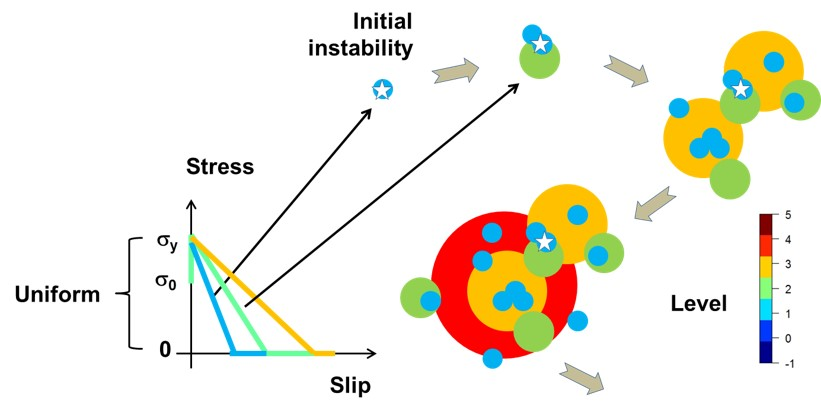
R1.2 Multi-scale fault heterogeneity
Earthquake rupture shows a scaling of scale-invariant Fractal feature and its description can be normalized to no-dimension. For example, fault slip is propotional to fault dimension, but the slip rate and rupture velocity are invariant with scale. If so, fracture energy is required linearly scaled and this is a key to understand the earthquake mechanics at various scales (Aochi and Ide, 2004). Ide and Aochi (2005) propose multi-scale heterogeneous fault model, in which heterogeneity is expressed by superposition of various sized patches and fracture energy is proportional to patch size. This mode allows to generate different magnitude events coexising on a fault plane.
Earthquake growth: Cascade or nucleation?
It had been thought that cascade and nucleation rupture growths conflict each other as the two concepts are based on non-scaling or scaling of frictional property, respectively. However, in the framework of multi-scale heterogeneity, cacasde and nucleation rupture growths are generated naturally according to just the spatial distribution of patches. If the patches are located densely for the interactions, cascade rupture growth is obseved (interaction of small patches becomes large enough to trigger a large one). If they are located sparse, nucleation is required to trigger large patch. (Ide and Aochi, 2005; Aochi and Ide, 2009)
Fault rheology or “slip- and time-dependent law”
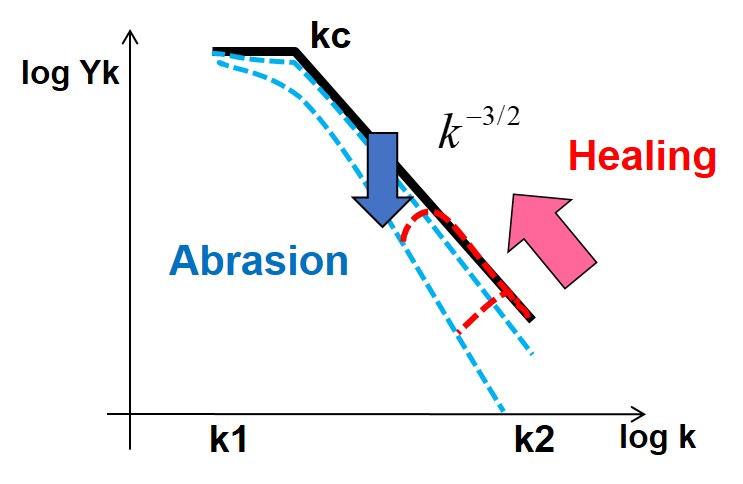
R1.3 Fault rheology
Fricitonal property of fault evolves with time due to physical and chemical reaction. It is well recognized that friction reduces with on-going slip during an earthquake (“slip-weakening process”). However it is always a quesion how the frictional proprty evolves during inter-seismic period with respect to the state of contact. This process cannot be written with a simple equation, as many factors are involved. Several attêmps have been carried out to take into account of healing process of friction with time or aseismic slip (Aochi and Matsu’ura, 2002; Aochi and Ide, 2017).
Stress decreasing during aseismic slip
A quation has been raised if friction (stress) is increased or decreased during aseismic slow slip. During the 2009-2010 aseismic slip found at Gallero in Mexican subduction, stress continus decreasing during the sequence of a few months. (Maury et al., 2014)
Stress accumulation
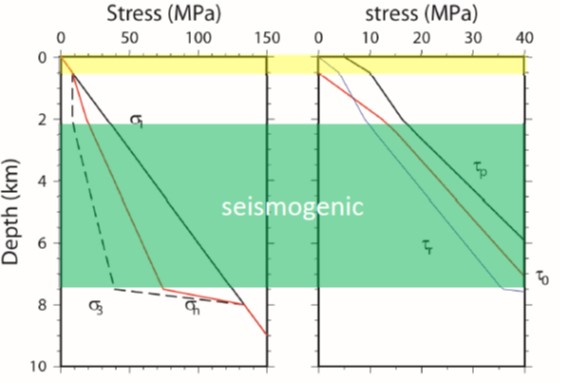
Recent earthquakes
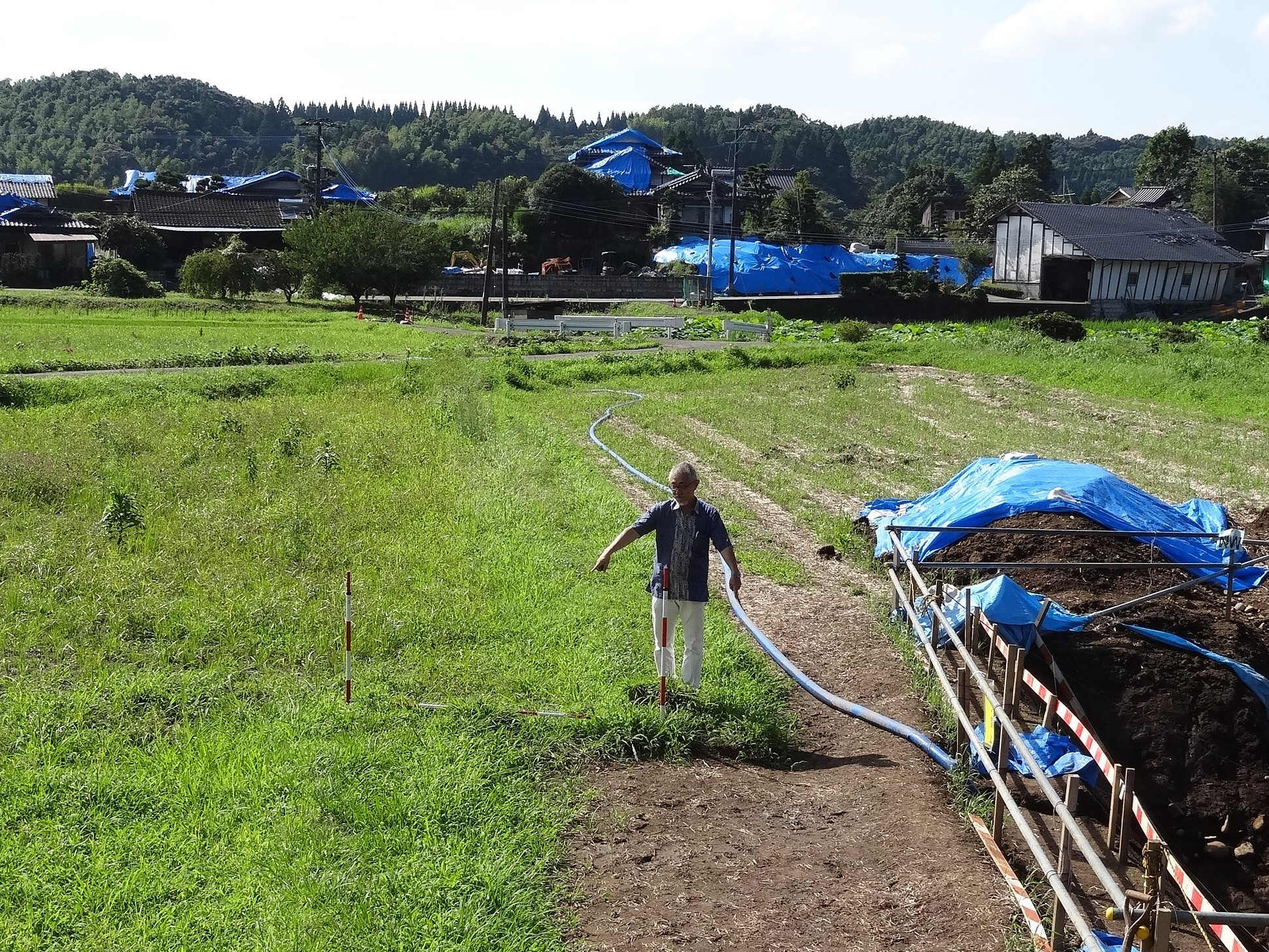
R1.5 Recent earthquakes
It is important to learn from the past earthquakes. From the point of view of dynamic rupture process, I have worked on the 1992 Landers (USA), 1999 Izmit (Turkey), 2007 Chuetsu-oki (Japan), 2011 Tohoku (Japan) earthquakes, for example. Some preliminary unpublished works were done for the 2008 Sichan (China) and 2008 Miyagi-Iwate (Japan) as well.
2011 M9.0 Tohoku earthquake
This earthquake was unfortunately beyond the understanding at that time and revealed that seismic cycle is more complex: multi-scale features both in space and time rather than a simple cycle of characteristic earthquakes. Some call it as super seismic cycle. We applied the concept of multi-scale heterogeneity in fracture energy on the plate interface. Namely patches of different size with different fractuer energy interact each other at different scales The M9 event begins gradually from small patches and ruptured a medium-size patch at depth (correponding to M7 - 7.5). After becoming larger over the area of the foreshock (M7.3) in the shallow, the event got sufficient energy to rupture a M9 patch behind. This is our interpretation (Aochi and Ide, 2011; Ide and Aochi, 2013; Aochi and Ide, 2014).
Earthquake scenario
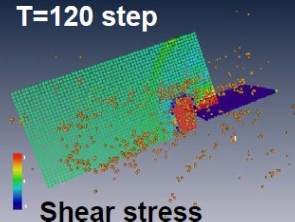
Strong Motion Seismology
Prefaces
I had never worked on this subject when I was in Japan. It has started strangely only after my coming to France. However near-field ground motions are not yet quantitatively understood in its causality, mostly because of lack of recorded data and also because of complexity of earthquake source mechanics. Many things to do!
Existing methodologies are reviewed in Douglas and Aochi (Geophysics, 2008).
Topics/Keywords
Dynamic Rupture Scenarios
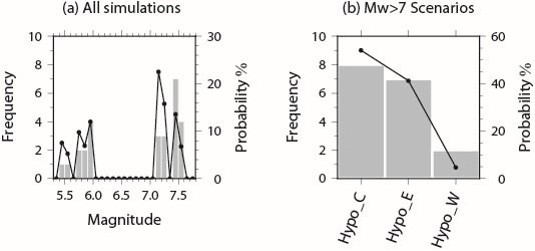
Ground Motion Prediction Equations
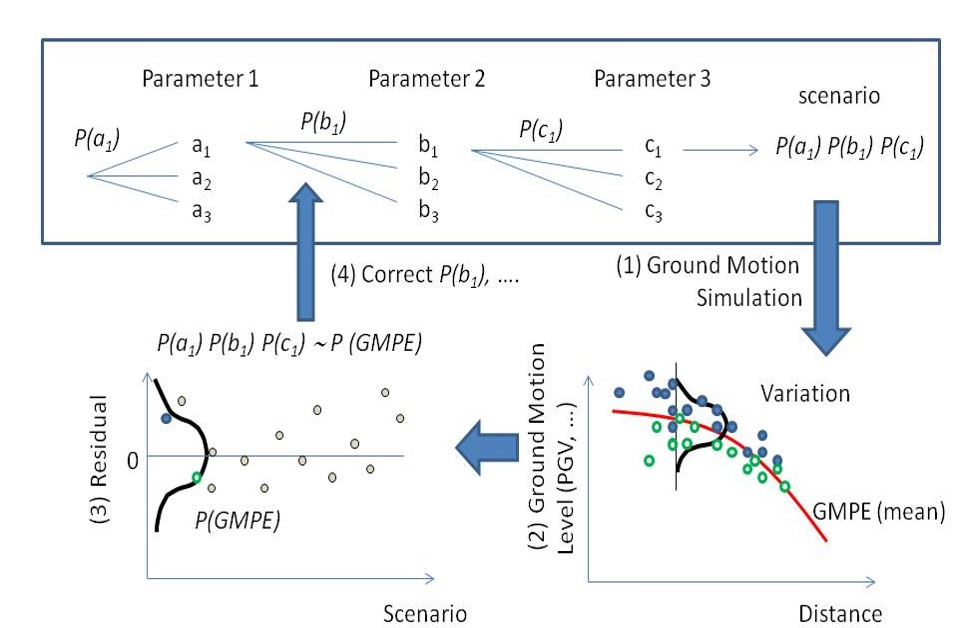
Near-field Ground Motions
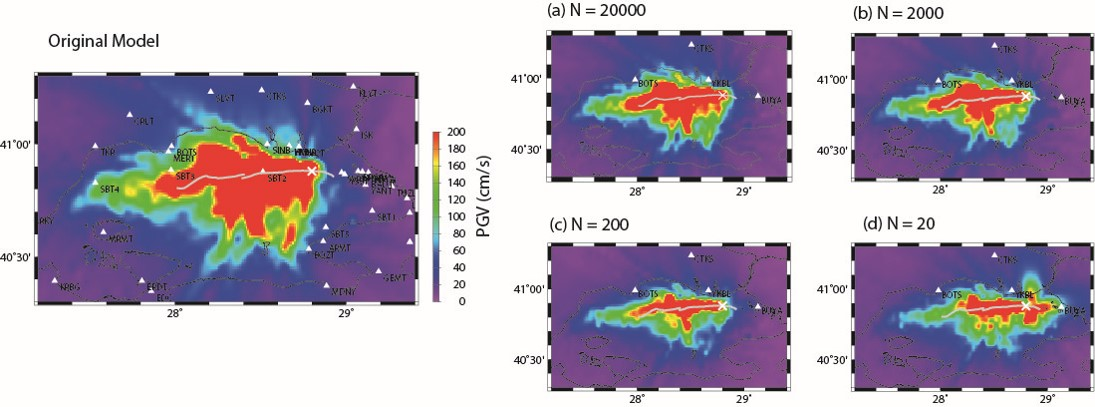
Numerical Methods
Open Codes
IA2005: A code simulating Ide and Aochi (2015) is open.
Numerical Methods
Dynamic rupture propagation - BIEM or “Fric-Frac3D”

Boundary Integral Equation Method (BIEM)
BIEM provides a precise expresison of stress field on the rupturing fault plane within linear elasto-dynamics. BIEM develpped by Aochi et al. (2000) calculate the stress along non-planar fault system in 3D elastic, infinite medium, coupled with Mohr-Coulomb rupture criterion and slip-weakening friction. BIEM is processed after mathematical optmization in order to avoid singularity in stress field.
Static solution is also developped to calculate static stress redistribution from an earthquake (Aochi and Ide, 2009; Aochi et al., 2014) and simulte aseismic slow slip (Maury et al., 2014; Smai and Aochi, 2017; Aochi and Ide, 2017).
Code
Written in Fortran90 with MPI/OpenMP parallelisation. The convolution for structural grids may be estimated fast by FFT.
Elastic wave propagation - FDM or “Ondes3D”
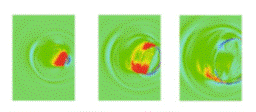
Finite Difference Method (FDM)
FDM direcreizes the differential equations of elasto-dynamics with structual grids prepared in the space. This is very suitable for calculating fast the wave propagation in a large domain. FDM initially developped by Aochi and Madaraiga (2003) aims to include any finite source description (any geometry, any mechanism, any slip time funciton). One of the generic versions is released as Ondes3D (Dupros et al., 2008). The review is given in Aochi et al. (2013).
Code
Written in C or C++ with MPI/OpenMP parallelization. A version of GPU calculation is also released.
Hydro-mechanical coupling - BIEM-FDM or “SimCity Generator”
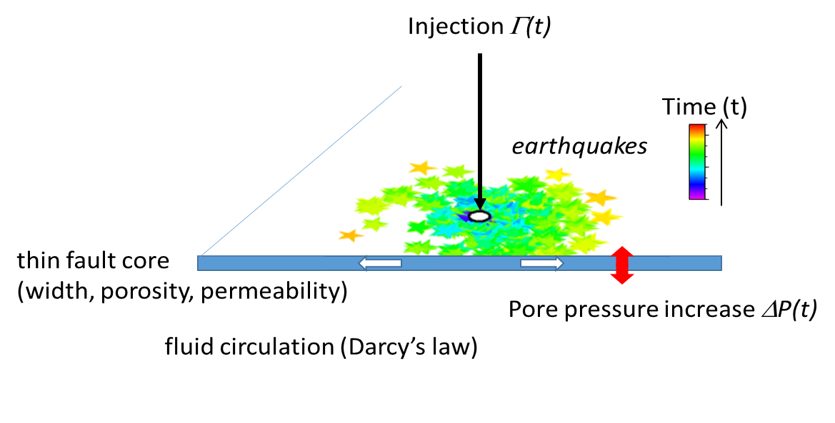
Hydro-mechanical modeling (Induced Seismicity)
Injected fluid circulates along a fault plane surrounded by imperpeable medium. Hydraulic part is solved by fintie difference and mechanical part is simulated by boundary integral equation methods (Aochi et al., 2014; Douglas and Aochi, 2014; Aochi et al., 2017). This is fully coupled; namely fault motion can vary hydraulic parameters. A version couples further wiht probabilistic seismic hazard assessment method for providing a quantitaive monitoring protocol.
Code
Code is written by Fortran with OenMP parallelization.
Shallow thrust faulting - BDM

Boundary Domain Method
A shallow thrust fault can be modelled by a hybrid method between boundary integral equation and finite difference methods. This is called Boundary Domain Method. The finite difference calculation completes the Greens’ functions in semi-infinite medium, which the original boundary integral equation does not have (Aochi, 2018).
Code
Code is written by C with MPI/OpenMP parallelization.
Hydro-Thermal-Mechanic faulting - TOUGH-BIEM
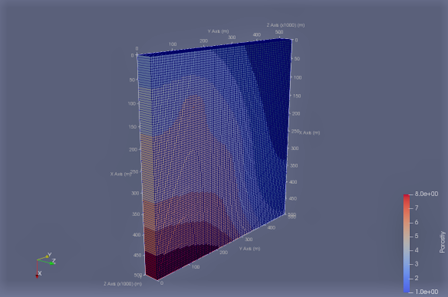
TOUGH-BIEM
TOUGH (Transport Of Unsaturated Groundwater and Heat) code developped by Lawrence Berkeley National Laboratory is a suite of Simulators for Nonisothermal Multiphase Flow and Transport in Fractured Porous Media. A coupling with boundary integral equation method is under developpement through collaboration with LBNL for simulating the complex behavior of fault and fault zone (Aochi et al., 2018).
Code
A sequential TOUGH-BIEM simulation is now possible through shell script.
Projects
- ANR E-CITY (2022-2025)
- ANR MODULATE (2019-2022)
- ENS project (2017- )
- ERI-JSPS (2013-2014,2015-2018)
- GENCI-CINES (2011-)
- MARSite (2012-2016)
- NEMOH (2012-2015) Cladio’s thesis
- S4 (2012-2015)
- DYNTOHOKU (2011-2013)
- DEBATE (2009-2012)
- SEISMULATORS (2006-2008)